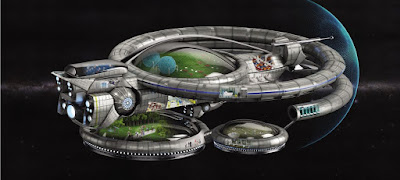A nurse prepares a COVID-19 vaccine in Guwahati, India, on 10 April. A new subvariant named BA.2.75 that was first detected in India has surfaced in many other countries. ANUPAM NATH/AP IMAGES
Topics: Biology, COVID-19, DNA, Economics, Environment, Evolution, Existentialism
Ed Rybicki, a virologist at the University of Cape Town in South Africa, concentrated his article in Scientific American on the viruses dominating the news cycle in the early 2000s: Ebola, Marburg, and HIV. Not comforting, but he said, "HIV, which is thought to have first emerged in humans in the 1930s, is another kind of virus, known as a retrovirus." Not mentioned, but the H1N1 comes from the 1918 Flu Pandemic, and a friend in Texas lost his girlfriend to it also in the early 2000s. Retro means "a process that reverses the normal flow of information in cells" and relates to a bridge between the first forms of life on this planet. In an e-brief, I wrote my first year at JSNN, an article in Nature: Education posits that viruses are not ‘alive’ because they don’t have metabolic processes, one of the four criteria for life (“organized, metabolism, genetic code, and reproduction”). The last part is important: they cannot reproduce asexually (unicellular division), or sexually with genders, spermatozoa, and an incubation period before birthing a copy. In other words, they aren't "alive," but they aren't dead either. They manage to replicate themselves by invading a host. Usually us.
It DOES mention three possible mechanisms as to origins: The Progressive Hypothesis, i.e., “bits and pieces” of a genome gained the ability to move in and out of cells (retroviruses like HIV given as an example); The Regressive Hypothesis, meaning the viruses evolved from some common ancestor to their current state (reductio ad absurdum), lastly The Virus-First Hypothesis, which puts any anthropocentric notions away and their hypothesis that viruses existed before mortals as “self-replicating units.”
I am as ready for this pandemic to be over as anyone else. However, this read from AAAS didn't give me hope that a societal "all-clear" will be uttered, or that we'll overcome our shared arrogance and stupidity:
In the short history of the COVID-19 pandemic, 2021 was the year of the new variants. Alpha, Beta, Gamma, and Delta each had a couple of months in the Sun.
But this was the year of Omicron, which swept the globe late in 2021 and has continued to dominate, with subvariants—given more prosaic names such as BA.1, BA.2, and BA.2.12.1—appearing in rapid succession. Two closely related subvariants named BA.4 and BA.5 are now driving infections around the world, but new candidates, including one named BA.2.75, are knocking on the door.
Omicron’s lasting dominance has evolutionary biologists wondering what comes next. Some think it’s a sign that SARS-CoV-2’s initial frenzy of evolution is over and it, like other coronaviruses that have been with humanity much longer, is settling into a pattern of gradual evolution. “I think a good guess is that either BA.2 or BA.5 will spawn additional descendants with more mutations and that one or more of those subvariants will spread and will be the next thing,” says Jesse Bloom, an evolutionary biologist at the Fred Hutchinson Cancer Research Center.
But others believe a new variant different enough from Omicron and all other variants to deserve the next Greek letter designation, Pi, may already be developing, perhaps in a chronically infected patient. And even if Omicron is not replaced, its dominance is no cause for complacency, says Maria Van Kerkhove, technical lead for COVID-19 at the World Health Organization. “It’s bad enough as it is,” she says. “If we can’t get people to act [without] a new Greek name, that’s a problem.”
As Omicron rages on, scientists have no idea what comes next, Kai Kupferschmidt, American Association for the Advancement of Science


